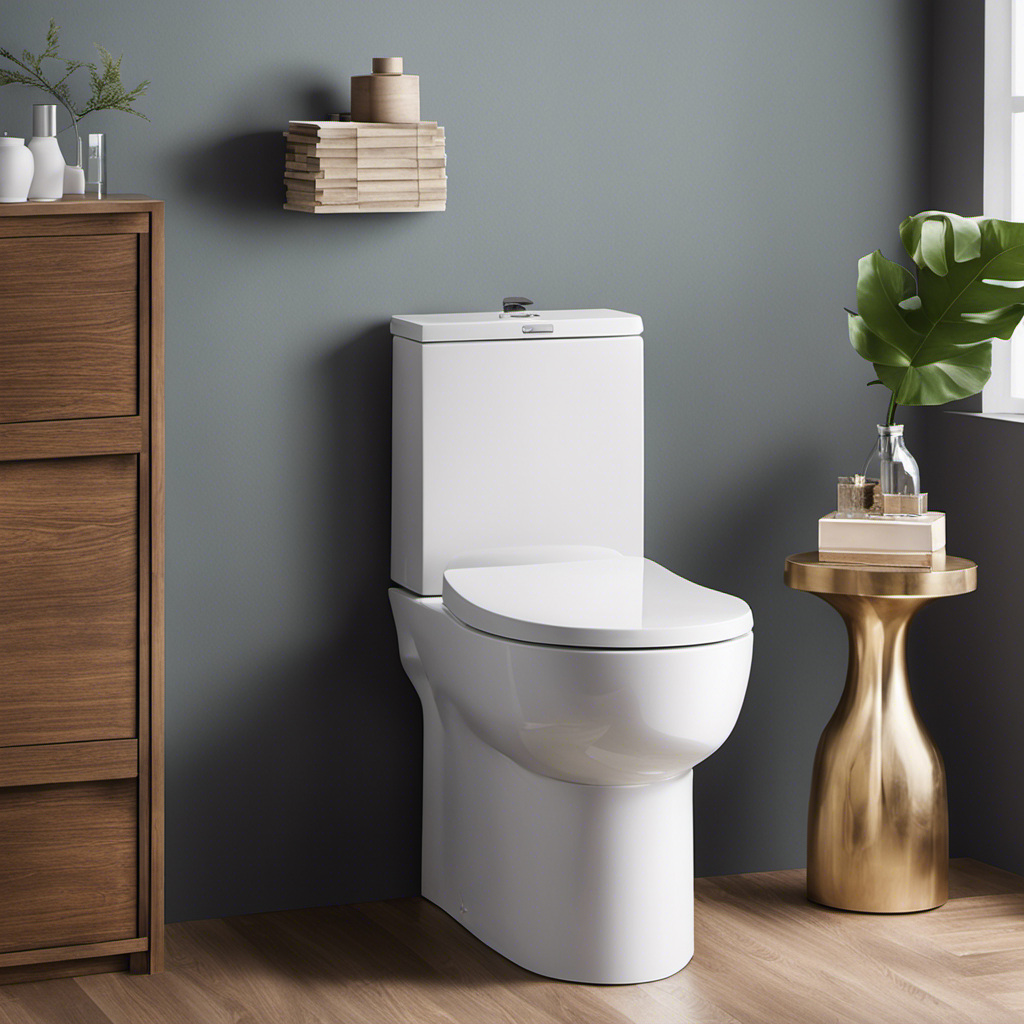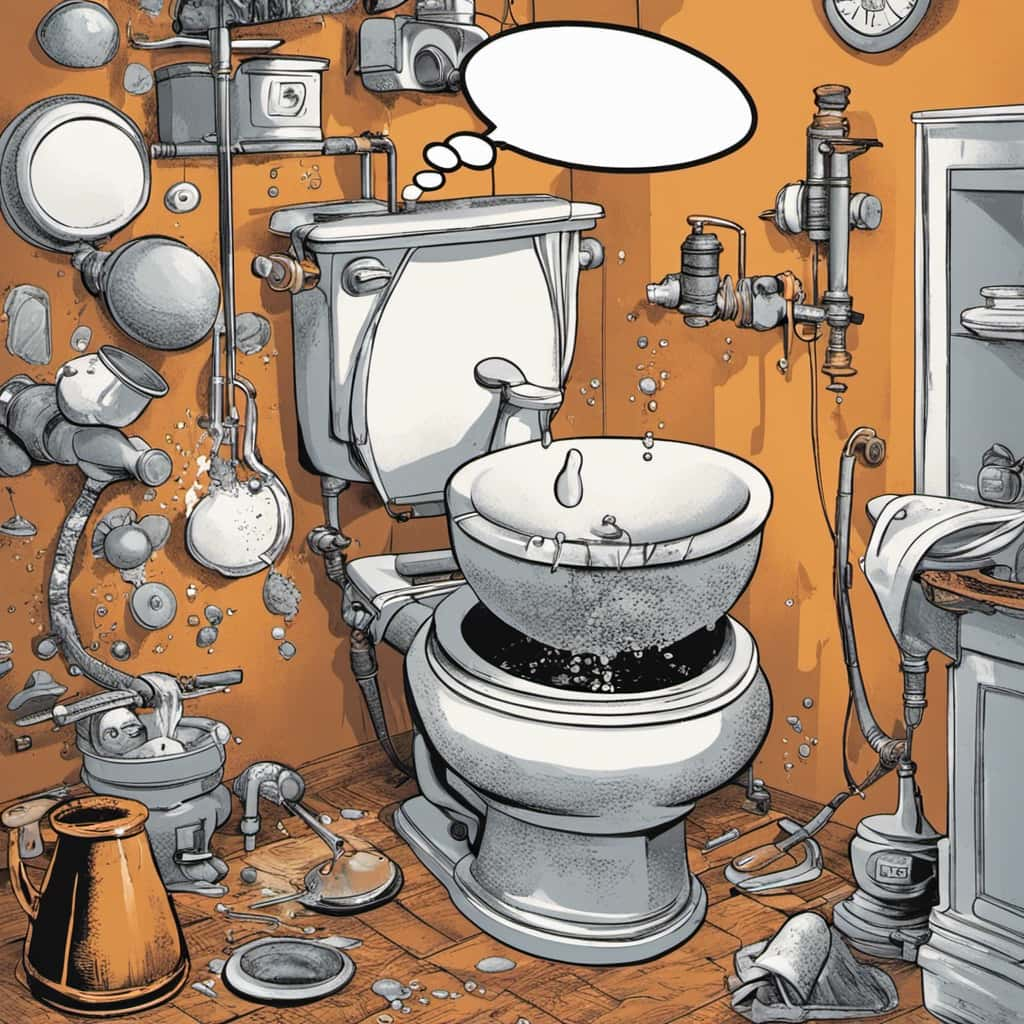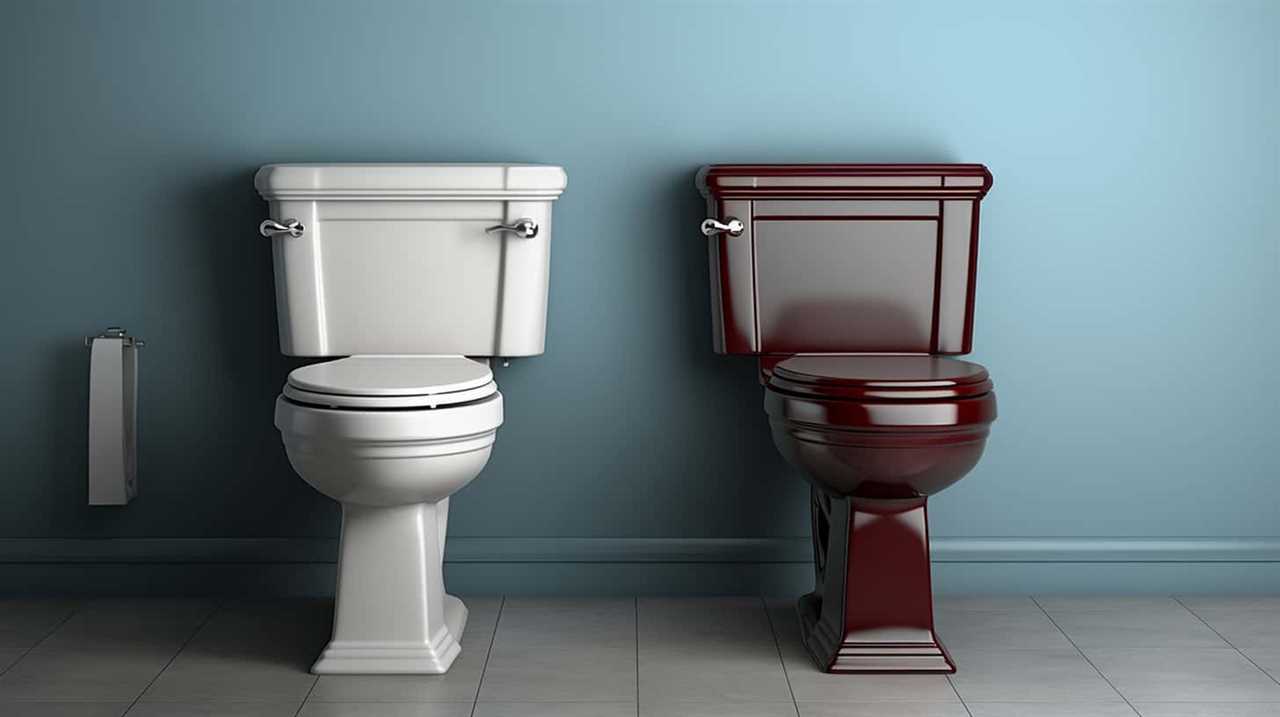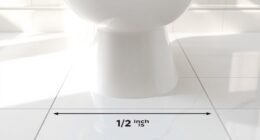Did you know that flushing the wrong type of paper down the toilet can lead to clogs and costly repairs?
In this article, I’ll explore the differences between regular paper and toilet paper, the types of paper suitable for flushing, and the consequences of improper disposal.
With solutions and techniques for breaking paper clogs, you’ll learn how to avoid potential plumbing disasters.
So let’s dive in and discover the ins and outs of paper versus toilet paper.
Key Takeaways
- Paper and toilet paper differ in thickness, weight, and absorbency.
- Non-flushable paper includes paper towels, notebook paper, print paper, newspapers, and wrappers.
- Flushable paper includes tissues and toilet seat covers, which are water-soluble and won’t leave residue.
- Solutions for breaking paper clogs in the toilet include using a toilet brush, plunger, dish soap, Epsom salt, baking soda and vinegar mixture, toilet auger, or calling a plumber for professional assistance.
Thickness, Weight, and Absorbency: How Paper and Toilet Paper Differ
Toilet paper differs from regular paper in terms of thickness, weight, and absorbency.
When it comes to using paper towels instead of toilet paper in the bathroom, there are both pros and cons to consider. Paper towels are generally thicker and more absorbent, making them suitable for cleaning up spills and messes. However, they are not designed to dissolve easily in water like toilet paper. This can lead to clogs and blockages in the plumbing system.
In terms of environmental impact, both paper and toilet paper have their drawbacks. The production of paper contributes to deforestation and pollution, while the production of toilet paper requires a significant amount of water and energy. Additionally, both types of paper often end up in landfills, adding to waste and pollution.
It is important to consider these factors when choosing between paper towels and toilet paper in the bathroom.
Suitable and Unsuitable Paper Types for Flushing
When considering what can and cannot be flushed, it is important to be aware of the types of paper that are suitable or unsuitable for the task. To help you make informed decisions, here are three key points to remember:
-
Flushable paper: Tissues and toilet seat covers are designed to dissolve easily in water and won’t leave residue. These options are suitable for flushing as they won’t cause clogs or blockages.
-
Non-flushable paper: Paper towels, notebook paper, print paper, newspapers, and wrappers are not suitable for flushing. These papers are not designed to degrade in the toilet drain and can lead to clogs and blockages.
-
Environmental impact: Flushing paper has a negative impact on the environment as it contributes to water pollution and waste. To reduce paper waste, consider alternatives such as bidets and water-saving toilet systems, which can help minimize the need for excessive paper use.
Breaking Paper Clogs in the Toilet: Solutions and Techniques
I can utilize a toilet brush, plunger, or even dish soap to effectively break up and remove clogs caused by excess paper in the toilet.
To prevent paper clogs in the toilet and maintain proper drainage, it’s important to follow some simple steps.
First, be mindful of what type of paper you flush. Only flush toilet paper and flushable tissues, as these are designed to dissolve easily in water. Avoid flushing non-flushable paper such as paper towels, newspapers, and wrappers, as they can accumulate and cause clogs.
Additionally, it’s important to use the right amount of toilet paper and avoid excessive use.
If you do experience a paper clog, try using a toilet brush to break it up near the surface of the toilet bowl. If that doesn’t work, a plunger can provide the necessary force to push the clog down the drain. Another option is to use dish soap to lubricate the paper and help it slide through the sewer lines.
Regular maintenance of toilet drains, including periodic cleaning with a toilet brush or plunger, can help prevent paper clogs and ensure proper functioning of the toilet.
Consequences and Negative Effects of Flushing Paper
Flushing excessive amounts of paper can lead to clogs in the toilet and potential long-term damage, requiring costly repairs or replacements. Here are the consequences and negative effects of flushing paper:
-
Clogs: Flushing a large amount of paper can cause a clog in the toilet, blocking it and preventing it from working properly. Unclogging the toilet may require the use of an auger or plunger.
-
Long-term damage: Regularly flushing paper can lead to long-term damage to the toilet. The accumulation of paper in the drain can create blockages and put strain on the plumbing system, leading to potential leaks or even the need for a complete toilet replacement.
-
Environmental impact: Flushing excessive amounts of paper is not environmentally friendly. Paper production contributes to deforestation, and improper disposal can lead to water pollution. It’s important to be mindful of the environmental consequences when using paper products and to dispose of them properly.
Understanding the Differences Between Paper Towels and Toilet Paper
While comparing paper towels and toilet paper, it is important to understand their differences in terms of thickness, absorbency, and durability.
Paper towels are typically thicker and more absorbent than toilet paper, making them suitable for cleaning up spills and messes. They are also more durable and can withstand more rigorous use.
On the other hand, toilet paper is specifically designed to dissolve easily in water, making it ideal for its intended use in the bathroom.
When it comes to the environmental impact, both paper towels and toilet paper have their pros and cons. Paper towels often come in plastic packaging and contribute to deforestation. Toilet paper, on the other hand, is usually made from recycled materials and can be more sustainable. However, excessive flushing of toilet paper can lead to clogs and blockages in the plumbing system.
Ultimately, the choice between paper towels and toilet paper depends on the specific situation and individual preferences.
The Importance of Proper Disposal: Flushing Vs. Trash Bin
Proper disposal of paper products is crucial, whether through flushing or throwing them in a trash bin. Here are the proper disposal methods and their environmental impact:
-
Flushing:
- Flushing toilet paper is generally safe as it is designed to dissolve easily in water.
- However, non-flushable paper products like paper towels, newspapers, and wrappers should not be flushed as they can cause clogs and blockages.
- Flushing a large amount of paper can lead to costly repairs and long-term damage to the toilet.
-
Trash Bin:
- Non-flushable paper products should be disposed of in a trash bin.
- Properly disposing of paper in a trash bin reduces the risk of clogs and blockages in the plumbing system.
- It also helps prevent environmental pollution caused by paper waste in waterways.
It is important to choose the appropriate disposal method for paper products to minimize their environmental impact and avoid costly plumbing issues.
Eco-Friendly Alternatives to Traditional Paper Products
I prefer using eco-friendly alternatives to reduce my impact on the environment and minimize the use of traditional paper products.
There are several options available that are both sustainable and effective.
One eco-friendly alternative to traditional paper towels is using reusable cloth towels. These towels can be washed and reused, reducing the need for disposable paper products.
Another option is using bamboo toilet paper, which is made from a fast-growing and renewable resource. Bamboo toilet paper is biodegradable and requires less water and chemicals to produce compared to traditional toilet paper made from trees.
Additionally, using digital options like e-books and online documents can help reduce the demand for paper.
Frequently Asked Questions
Can I Flush Facial Tissues Down the Toilet?
Yes, you can flush facial tissues down the toilet, but it is not recommended. It may cause clogs and blockages in the plumbing system. It is best to dispose of facial tissues properly in the trash.
What Are Some Eco-Friendly Alternatives to Traditional Toilet Paper?
Eco-friendly alternatives to traditional toilet paper include bidets, which offer numerous benefits such as reduced paper waste, improved hygiene, and cost savings. Bidets use water to clean, eliminating the need for toilet paper.
How Long Does It Take for Plain Paper to Dissolve in Water?
Plain paper can take weeks to dissolve in water. The rate of dissolution can be affected by water temperature. It’s important to consider this before flushing paper to avoid clogs and blockages in the toilet.
Can I Use Paper Towels as a Substitute for Toilet Paper in an Emergency?
In an emergency, paper towels can be used as a substitute for toilet paper. However, there are pros and cons to consider. Paper towels are more durable but may not dissolve easily in water, potentially leading to clogs.
What Should I Do if I Accidentally Flush Non-Flushable Paper Down the Toilet?
If I accidentally flush non-flushable paper down the toilet, I should take immediate action to prevent clogs. Using a plunger or an auger can help dislodge the paper, and proper disposal of non-flushable paper is essential to avoid future issues.
Conclusion
In conclusion, it’s clear that flushing unsuitable paper can lead to troublesome clogs and costly repairs. It is imperative to understand which types of paper are flushable and which are not, to prevent blockages in the toilet drain.
By using the appropriate solutions and techniques, such as a plunger or toilet brush, one can effectively break paper clogs and restore proper flushing. Remember, ‘an ounce of prevention is worth a pound of cure,’ so make sure to dispose of paper properly to avoid unnecessary hassle and expense.










